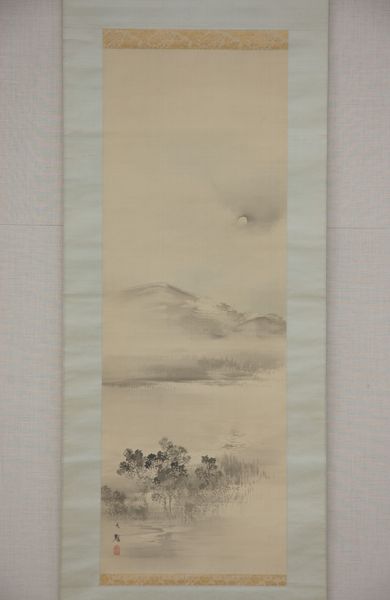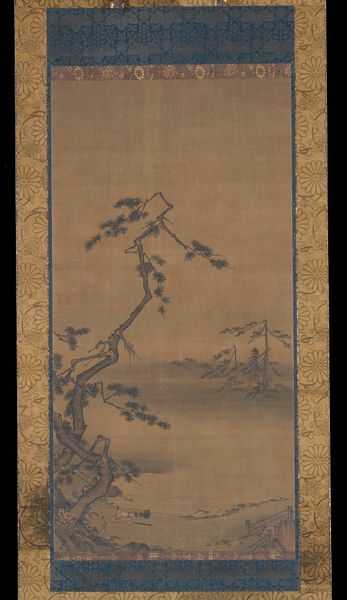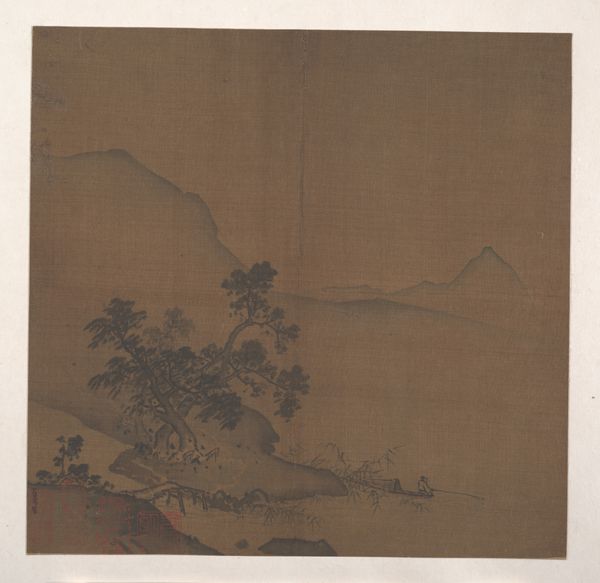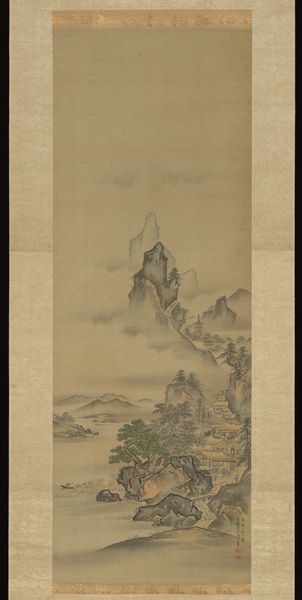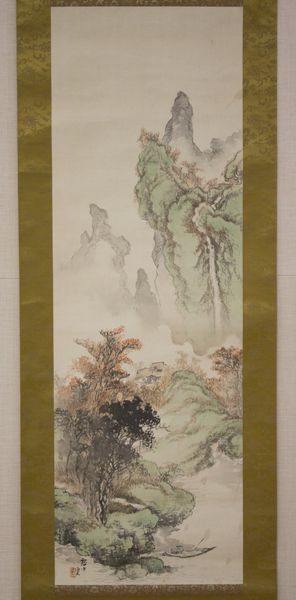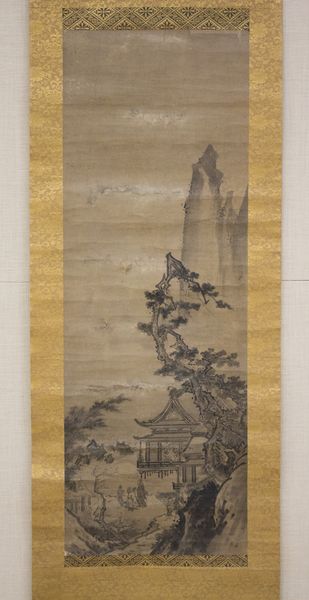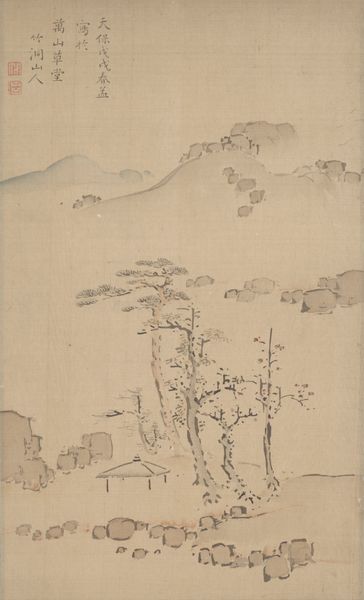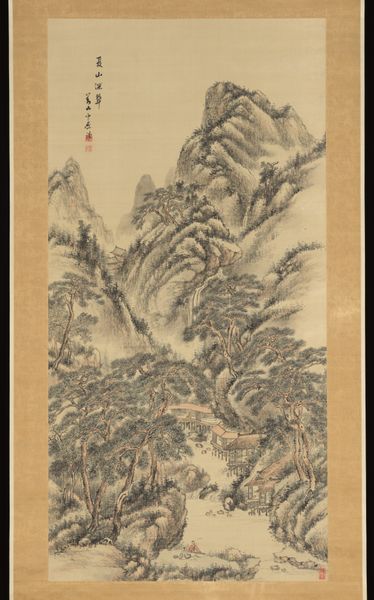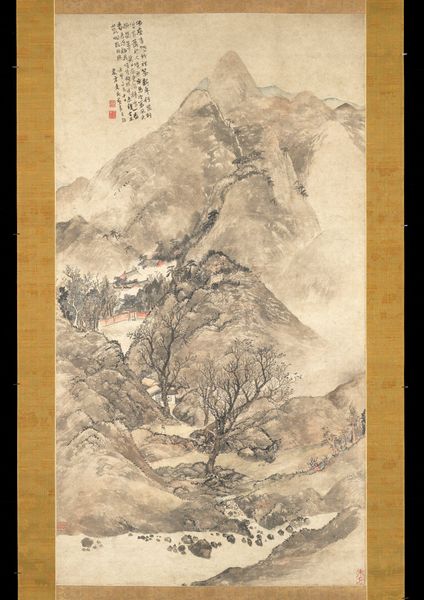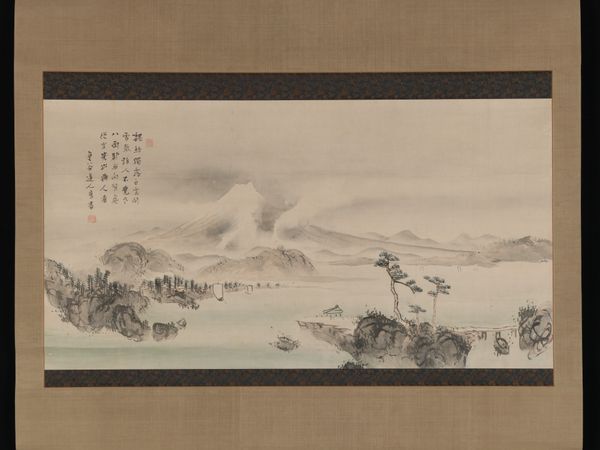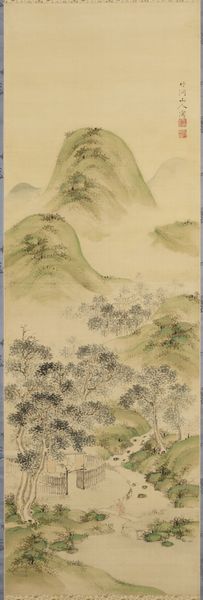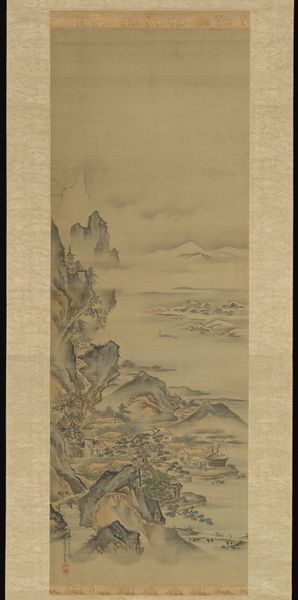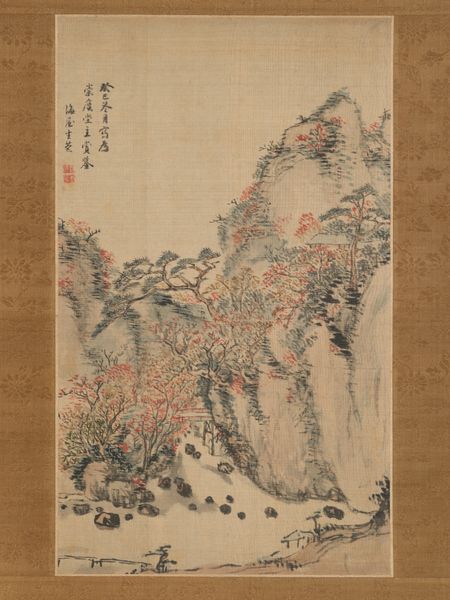
ink
#
water colours
#
ink painting
#
asian-art
#
landscape
#
ink
#
coloured pencil
#
orientalism
#
watercolor
Dimensions: Image: 38 5/16 × 13 9/16 in. (97.3 × 34.4 cm) Overall with mounting: 70 11/16 × 17 1/8 in. (179.5 × 43.5 cm) Overall with knobs: 70 11/16 × 19 1/4 in. (179.5 × 48.9 cm)
Copyright: Public Domain
Editor: This is "Watermill in the Mountains," created in the 19th century by Kishi Ganryo. It's done with ink and watercolors, giving it a delicate, ethereal quality. I'm struck by how the artist uses simple materials to create such depth and texture. How would you interpret the social or economic context influencing its creation? Curator: Well, let's consider the ink and paper themselves. The production of high-quality ink in the 19th century involved a complex system of labor and resources. Think about the specific types of trees burned for the soot, the animal glues used as binders. Was Ganryo sourcing local materials, or relying on established trade routes? And consider the paper—the fibers, the processing. All these things tell us about the artist's position and the material culture around him. Editor: So, the materials aren't just passive elements but hold stories of labor and trade. Does the subject matter, the watermill itself, fit into this materialist reading? Curator: Absolutely. A watermill represents technology, a harnessing of natural resources for production. This landscape isn't just pretty scenery; it's also a depiction of labor, industry, and the intersection of human activity with the environment. Whose labor was involved in making the watermill function? How does the artist's representation aestheticize or perhaps obscure that labor? These are the kinds of questions we can ask. Editor: It’s interesting how viewing it through this lens highlights the usually unseen aspects of art, like production and social structures. I hadn’t considered those angles before! Curator: Exactly! By focusing on the materiality and the means of production, we start to unravel the complex relationship between art, labor, and the wider economic realities.
Comments
No comments
Be the first to comment and join the conversation on the ultimate creative platform.
